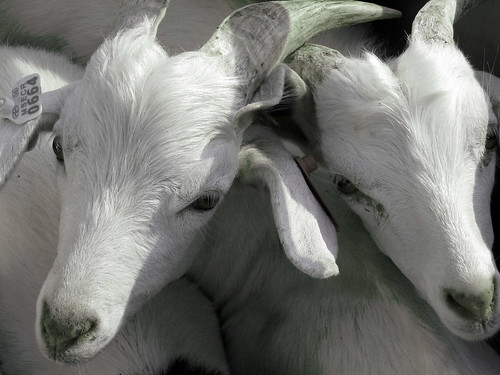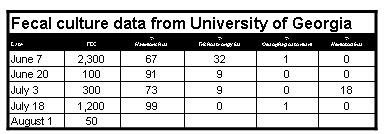Robie Robinson's (VA) consignment of four Kiko cross bucks had the lowest egg counts on August 1st. Pam Adam's (MD) two Boer cross bucks also had egg counts below 500 epg, as did Warren Barnes' (MO) single buck consignment.
 The data explain why more goats (n=9) required deworming on August 15 and why we expect more goats to require deworming on August 29, the next work date. Unfortunately, we do not have the latest fecal egg count data when we make deworming decisions.
The data explain why more goats (n=9) required deworming on August 15 and why we expect more goats to require deworming on August 29, the next work date. Unfortunately, we do not have the latest fecal egg count data when we make deworming decisions.None of the goats have high average fecal egg counts for the first four collection dates because August 1st is the first time egg counts have been above 500 epg for more than a few goats.
Egg counts averaged 1,106 when the goats were brought to the research center on June 7, but the double deworming with moxidectin and levamisole, along with the grazing of chicory and pearl millet, kept egg counts low for the next six weeks.
 As the effects of the double deworming wear off and the goats continue to graze lower cool season grasses, they are likely to become more parasitized, though the weather has been dry for the past several weeks.
As the effects of the double deworming wear off and the goats continue to graze lower cool season grasses, they are likely to become more parasitized, though the weather has been dry for the past several weeks.We're still waiting for the results of the larval test for the August 1st pooled fecal sample. The following table shows the breakdown of worm eggs in the pooled fecal samples. As expected, the barber pole worm (Haemonchus contortus) is the dominant worm parasite, though the 18% Nematodirus from the July 3rd collection date is interesting.

Click on table to view it in another window.
Download latest FEC report











